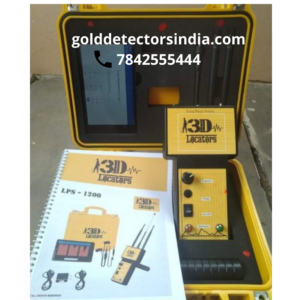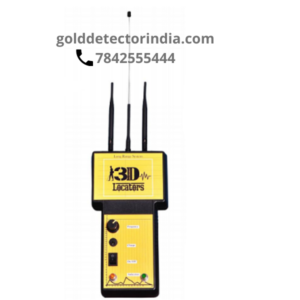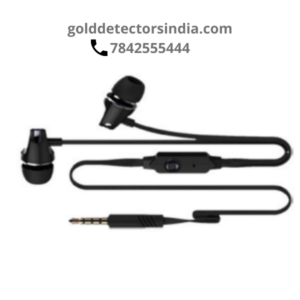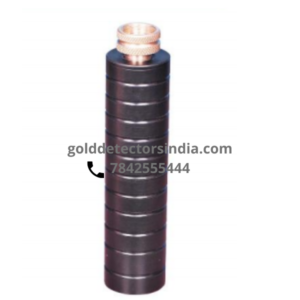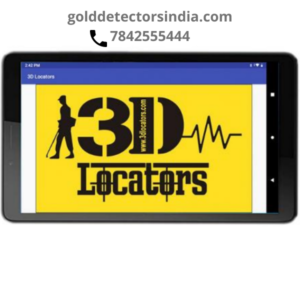LPS-1200 Description
LPS – 1200 is professionally engineered advanced Long range locator. It is designed on a Magneto Impedance (MI) technology to define site magnetic impedance, difference in prospection of a fault zone. This is designed in such a way that it can continuously measure the differences in the site from receiving command to prepare the digital data. This data is further track recorded to pinpoint a particular location for selection of a well site.
LPS – 1200 special software is used for data collection, input operations, and report generation. This software is setup with frequency tuning system for short-range and long-range detection where low frequency performs long-range investigations and high-frequencies detect the short-range investigations.
This device is setup with the gain amplification system to increase or decrease the amplification depending upon the magnetic variations of a specific site and countries geomagnetic field differences.
System Specifications
Technology: Magneto Impedence(MI)
Front Range : Min 100M -Max 2000M
Depth Range : Min 100 M – Max 500M
Battery : Li-ion Rechargeable
Transmitting Antennas : Long range wireless coverage, Antenna is heavy-duty, weather proof Antenna for extending the range of your 802.11a/b/g/n/ac
Receiving Antennas : SMA-Female; Band:UHF ; Frequency: 400/470MHz ; Input Impedence:50ohm
System Holder: Gyroscopic system holder with non-conductive material for noise reduction.
Charger: 5V 1 A DC charger
Indication: Buzzer
Charge indication: LED
Wireless communication: Bluetooth
Frequency range selector: POT
Reporting: Digital
Report Sharing: E-mail
Gain slection: 1X – 10X
Location and depth Axis: 0-3000
SI Unit: Nano Tesla
Input: Manual
Coordinating system: GPS
Parts & Features
Long Range Positioning System
• Built-in Processor
• Sensor Modules
• Inbuilt rechargeable batteries and signal
• Receiving system
Transreceiver Antennas
• Long-range wireless coverage
• Weather-proof antenna for extending the range of your 802.11a/b/g/n/ac
• The amplified signals are received via the receiver antenna
Voice Assistance
• Command and instructions on operation of Long Range Positioning System
System Holder
• System holder is designed with non-conductive materials to avoid magnetic interference.
• Inbuilt bearing drives the system
Charger
• Input Voltage (V) 100-280VAC
• Input Current (mA) 100
• Output Power 5V 1A
• Load Regulation (%) +/- 5
TAB
• Tab powered on Android platform works as Host to run the Software for LPS-1200
Safety Case
• Tough outer case
• Individual slots for safeguarding each part and accessories
Working Methodology
1. The Telescopic antenna is the receiver antenna and the DBI antennas are the transmitter antenna. Connect both the antenna to the long-range system as shown in the picture below
2. Connect the system holder to the base of long-range system, by rotating the thread attaching the base connector, and ensure it is fit properly for gyroscopic positioning.
3. Turn ON the LPS-1200 system and the Tablet to build a connection for data transfer. Once the beep sound is heard that indicates the system is ON and waiting for Tab receiver. Connect earphones to the tablet for voice assistance.
4. In the tablet homepage, select the long range survey, where the system prompts to the next step of range selection and tablet communication. Enter the Password 1234.
5. Select the appropriate front-range and depth-range depending upon the areas of topography and geological conditions. After selection, click on the communication address shown in the tablet to build connection in between the Tab and Long-range system.
6. Once the system is connected and both host and long-range system is paired we start receiving the live data on the screen indicated as a graphical dial. It also shows the frequency at the bottom left of the tablet screen. For the first time, system may ask for authentication and the password is 1234.
7. Adjust the frequency to the low frequency signals and follow the readings shown on the display according to the movement of the long-range system.
8. Start from any corner of the property depending on the topography of the land and physically hold the long-range system ad rotate in clock-wise or anti clock-wise until we get the highest data on the display dial. The highest data indicates we are on the highest magnetic axis to start the survey.
9. From the highest axis start the survey and follow the direction and continue teh survey until the long-range system swivels 180o which indicates that we are crossing the target.
10. Mark the target and confirm the directional fluctuation at a distance of 5 meters by checking teh system pointing direction from four sides of the target. After ensuring the number of directions , increase the frequency to a medium or higher frequency to check the short-range. Fold the telescopic antenna to check the pin point target.
11. From the highest axis start moving towards the target to which ensures the rotation in clockwise or anticlockwise to confirm that we are on the target.
12. The rotation of the system confirms that we have pointed a fault zone, mark the confirmed target. Next step is to conduct a depth survey to calculate the depth from the surface to the subsurface fault.
13. Extend the receiver antenna and decrease the frequency to low frequency to conduct teh depth survey. We need to follow the data on the depth axis screen which is the y-axis for the location axis.
14. DEPTH AXIS CLICK AXIS 2
From the located target follow the highest axis to ensure we get 180o in the long-range system which shows there is a magnetic difference on the y-axis of the location. Mark the specific location where we get the difference and continue the survey on the same axis to check for the second and third difference area.
15. Measure the distance from the target to the differed zone on the depth axis followed by distance to the first difference, second and third , measure the distance in meters.
16. Make a note of the measurements taken and finish the survey for further verification by the next cross checking method.
Note: Do not turn ON the equipment during charging.
Co-partners: https://sniperelectronics.in
People who viewed LPS-1200 also viewed Geo-Master.


